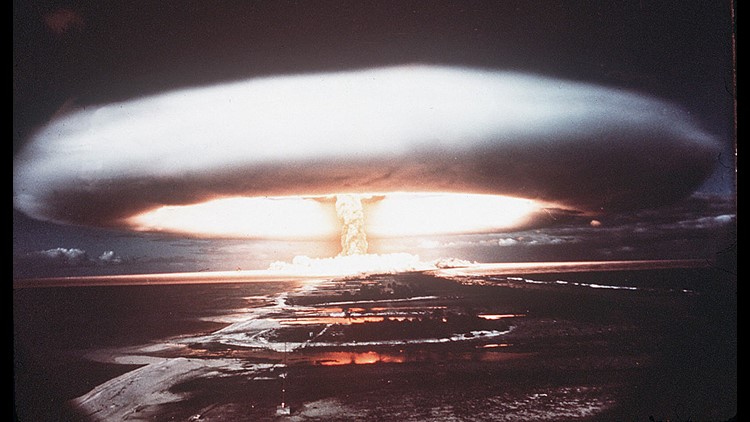The Bulletin of the Atomic Scientists moved the Doomsday Clock 30 seconds closer to midnight Thursday due to global instability, climate change, and the role President Donald Trump will play in science and nuclear proliferation.
The nonprofit determines each year whether events of the previous year pushed humanity closer or further from destruction. “It is two and a half minutes to midnight,” the Bulletin announced Thursday.

The BAS said no serious arms control talks were ongoing between the U.S. and Russia, which combined, control 90 percent of the world’s nuclear arsenal. In addition, the BAS identified threats in North Korea, India, and Pakistan as global threats that could explode at any second.
“This already-threatening world situation was the backdrop for a rise in strident nationalism worldwide in 2016, including in a U.S. presidential campaign during which the eventual victor, Donald Trump, made disturbing comments about the use and proliferation of nuclear weapons and expressed disbelief in the overwhelming scientific consensus on climate change,” the scientists wrote in a report explaining the movement of the clock.
The movement of the clock less than a minute was a first in the 70-plus year history of the Doomsday Clock. The BAS said the unprecedented move reflected the fact that President Trump has only been in office a few days and he hasn’t had enough time to take much official action regarding science or nuclear proliferation.
Still, the BAS said “words matter” and that Trump’s statements and actions “have broken with historical precedent in unsettling ways.”
“He has made ill-considered comments about expanding the U.S. nuclear arsenal. He has shown a troubling propensity to discount or outright reject expert advice related to international security, including the conclusions of intelligence experts. And his nominees to head the Energy Department and the Environmental Protection Agency dispute the basics of climate science,” the BAS wrote.
The BAS continued, “In short, even though he has just now taken office, the president’s intemperate statements, lack of openness to expert advice, and questionable cabinet nominations have already made a bad international security situation worse.”
The Bulletin made several recommendations to help move the world away from a looming apocalypse including:
- U.S. and Russian leaders begin negotiating reductions in nuclear arms
- U.S. and Russia reduce alert levels of the existing nuclear weapons
- Governments around the world should sharply reduce greenhouse gas emissions and fulfill the Paris Accords
- Trump Administration should acknowledge climate change as a science-backed relality and redouble U.S. efforts to limit carbon dioxide emissions
- U.S., China, and Russia and other concerned nations should engage with North Korea to reduce nuclear risks in the regions.
The BAS ended the update with this paragraph:
“In 2017, we find the danger to be even greater, the need for action more urgent. It is two and a half minutes to midnight, the Clock is ticking, global danger looms. Wise public officials should act immediately, guiding humanity away from the brink. If they do not, wise citizens must step forward and lead the way.”
The clock was last moved in 2015, when it went from five minutes to three minutes. The last time the Doomsday clock was less than three minutes to midnight was in the 1950s.
WATCH THE FULL ANNOUNCEMENT, presentation begins at 14:05:
(Tap here if you are unable to see the video.)
What is the Doomsday Clock?
The Bulletin of the Atomic Scientists first displayed the clock in 1947, two years after the group was founded by people involved in the Manhattan Project. “The Clock evokes both the imagery of apocalypse (midnight) and the contemporary idiom of nuclear explosion (countdown to zero),” the Bulletin states on its site.
When the clock first moved in 1949, it moved from seven minutes to midnight to three minutes. The move came after President Harry Truman told the country that the Soviet Union had tested their first nuclear device. In 1953, after the first hydrogen bombs were tested by both the U.S. and USSR, the clock moved the closest it has come to midnight: two minutes. It remained there until 1960, when the clock was moved back to seven minutes.
The clock moved periodically during the remainder of the cold war, including to 12 minutes in 1963 after the Partial Test Ban Treaty was signed and to three minutes in 1984 when the Bulletin said U.S.-Soviet relations were at “their iciest point in decades.”
After the Cold War ended and both the U.S. and Russia agreed to reduce their nuclear arsenals, the clock was moved all the way to 17 minutes in 1991, but in the last 20 years the clock has begun moving closer to midnight again.
GO HERE to read the full statement regarding Thursday’s announcement.



